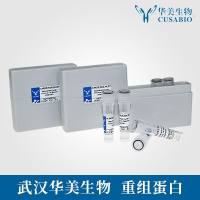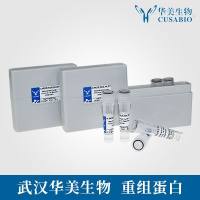Expression Cloning of Neural Genes Using Xenopus laevis Oocytes
互联网
- Abstract
- Table of Contents
- Materials
- Literature Cited
Abstract
Expression cloning requires a representative cDNA or genomic DNA library and a host organism in which the cloned genes can be transcribed and/or translated. It likewise requires a method to detect the expressed protein using, for example, the inherent biological activity of the gene or antibodies specific for the gene product. Most successful expression cloning strategies have employed cDNA libraries constructed in plasmid or bacteriophage lambda vectors and Xenopus oocytes or cultured mammalian cells as hosts. This unit presents several protocols designed for expression cloning paradigms that rely on electrophysiological recordings from Xenopus laevis oocytes.
Table of Contents
- Basic Protocol 1: Preparing Bacteriophage λ Template DNA for In Vitro Transcription
- Alternate Protocol 1: Preparing Plasmid DNA Template for In Vitro Transcription
- Basic Protocol 2: In Vitro Transcription of Sublibrary DNA
- Basic Protocol 3: Injection of Xenopus laevis Oocytes with In Vitro–Transcribed cRNA
- Support Protocol 1: Preparation of Xenopus laevis Oocytes for cRNA Injection
- Reagents and Solutions
- Commentary
- Literature Cited
Materials
Basic Protocol 1: Preparing Bacteriophage λ Template DNA for In Vitro Transcription
Materials
Alternate Protocol 1: Preparing Plasmid DNA Template for In Vitro Transcription
Materials
Basic Protocol 2: In Vitro Transcription of Sublibrary DNA
Materials
Basic Protocol 3: Injection of Xenopus laevis Oocytes with In Vitro–Transcribed cRNA
Materials
Support Protocol 1: Preparation of Xenopus laevis Oocytes for cRNA Injection
Materials
|
Figures
Videos
Literature Cited
| Ballivet, M., Nef, P., Couturier, S., Rungger, D., Bader, C.R., Bertrand, D., and Cooper, E. 1988. Electrophysiology of a chick neural nicotinia acetylcholine receptor expressed in Xenopus oocytes after cDNA injection. Neuron 1:847‐852. | |
| Bertran, J., Werner, A., Chillaron, J., Nunes, V., Biber, J., Testar, X., Zorzano, A., Estivill, X., Murer, H., and Palacin, M. 1993. Expression cloning of a human renal cDNA that induces high‐affinity transport of L‐cystine shared with dibasic amino acids in Xenopus oocytes. J. Biol. Chem. 268:14842‐14849. | |
| Bertrand, D., Ballivet, M., and Rungger, D. 1990. Activation and blocking of neuronal nicotinic acetylcholine receptor reconstituted in Xenopus oocytes. Proc. Natl. Acad. Sci. U.S.A. 87:1993‐1997. | |
| Bertrand, D., Cooper, E., Valera, S., Rungger, D., and Ballivet, M. 1991. Electrophysiology of neuronal nicotinic acetylcholine receptors expressed in Xenopus oocytes following nuclear injection of genes or cDNAs. Methods Neurosci. 4:174‐193. | |
| Boyle, M.B. and Kaczmarek, L.K. 1991. Electrophysiological expression of ion channels in Xenopus oocytes. Methods Neurosci. 4:157‐173. | |
| Brake, A.J., Wagenbach, M.J., and Julius, D. 1994. New structural motif for ligand‐gated ion channels defined by an ionotropic ATP receptor. Nature 371:519‐523. | |
| Brunden, M.N., Huff, R.M., Vidmar, T.J., and Cooper, M.M. 1990. Planning the purification process of active cDNA in expression cloning strategies. J. Theor. Biol.. 144:145‐154. | |
| Chao, M.V., Bothwell, M.A., Ross, A.H., Koprowski, H., Lanahan, A.A., Buck, C.R., Sehgal, A. 1986. Gene transfer and molecular cloning of the human NGF receptor. Science 232:518‐521. | |
| Costa, A.C., Patrick, J.W., and Dani, J.A. 1994. Improved technique for studying ion channels expressed in Xenopus oocytes, including fast perfusion. Biophys. J. 67:395‐401. | |
| Dascal, N. 1987. The use of Xenopus oocytes for the study of ion channels. CRC Crit. Rev. Biochem. 22:317‐387. | |
| Dumont, J.N. 1972. Oogenesis in Xenopus laevis (Daudin) 1. Stages of oocyte development in laboratory‐maintained animals. J. Morph. 136:153‐180. | |
| Etheridge, A.L. and Richter, S.M.A. 1978. Xenopus laevis: Rearing and breeding the African clawed frog. Nasco, Fort Atkinson, Wisc. | |
| Frech, G.C., van Dongen, A.M., Schuster, G., Brown, A.M., and Joho, R.H. 1989. A novel potassium channel with delayed rectifier properties isolated from rat brain by expression cloning. Nature 340:642‐645. | |
| Gundersen, C.B., Miledi, R., and Parker, I. 1984. Messenger RNA from human brain induces drug‐ and voltage‐operated channels in Xenopus oocytes. Nature 308:421‐424. | |
| Gurdon, J.B., Lane, C.D., Woodland, H.R., and Marbaix, G. 1971. Use of frog eggs and oocytes for the study of messenger RNA and its translation in living cells. Nature 233:177‐182. | |
| Gurdon, J.B. and Wickens, M.P. 1983. The use of Xenopus oocytes for the expression of cloned genes. Methods Enzymol. 101:370‐386. | |
| Hollmann, M., O'Shea‐Greenfield, A., Rogers, S.W., and Heinemann, S. 1989. Cloning by functional expression of a member of the glutamate receptor family. Nature 342:643‐648. | |
| Julius, D., MacDermott, A.B., Axel, R., and Jessell, T.M. 1988. Molecular characterization of a functional cDNA encoding the serotonin 1c receptor. Science 241:558‐564. | |
| Kushner, L., Lerma, J., Bennett, M.V.L., and Zukin, S.R. 1991. Using the Xenopus oocyte system for expression and cloning of neuroreceptors and channels. Methods Neurosci. 1:157‐173. | |
| Lam, A., Kloss, J., Fuller, F., Cordell, B., and Ponte, P.A. 1992. Expression cloning of neurotrophic factors using Xenopus oocytes. J. Neurosci. Res. 32:43‐50. | |
| Leonard, J.P. and Snutch, T.P. 1991. The expression of neurotransmitter receptors and ion channels in Xenopus oocytes. In Molecular Neurobiology: A Practical Approach (J. Chad and H. Wheal, eds.) pp 162‐182. IRL Press, Oxford. | |
| Lustig, K.D., Shiau, A.K., Brake, A.J., and Julius, D. 1993. Expression cloning of an ATP receptor from mouse neuroblastoma cells. Proc. Natl. Acad. Sci. U.S.A. 90:5113‐5117. | |
| MacKinnon, R., Reinhart, P.H., and White, M.M. 1988. Charybdotoxin block of shaker K+ channels suggests that different types of K+ channels share common structural features. Neuron 1:997‐1001. | |
| Methfessel, C., Witzemann, V., Takahashi, T., Mishina, M., Numa, S., and Sakmann, B. 1986. Patch clamp measurements on Xenopus laevis oocytes: Currents through endogenous channels and implanted acetylcholine receptor and sodium channels. Pflügers Arch.Eur. J. Physiol. 407:577‐588. | |
| Perez‐Reyes, E., Kim, H.S., Lacerda, A.E., Horne, W., Wei, X.Y., Rampe, D., Campbell, K.P., Brown, A.M., and Birnbaumer, L. 1989. Induction of calcium currents by the expression of the alpha 1‐subunit of the dihydropyridine receptor from skeletal muscle. Nature 340:233‐236. | |
| Pfaff, J.L., Tamkun, M.M., and Taylor, W.L. 1990. pOEV: A Xenopus oocyte protein expression vector. Anal. Biochem. 188:192‐199. | |
| Sambrook, J., Fritsch, E.F., and Maniatis, T. 1989. Molecular Cloning: A Laboratory Manual, 2nd ed., Cold Spring Harbor Laboratory Press, Cold Spring Harbor, N.Y. | |
| Shih, C. and Weinberg, R.A. 1982. Isolation of a transforming sequence from a human bladder carcinoma cell line. Cell 29:161‐169. | |
| Short, J.M., Fernandez, J.M., Sorge, J.A., and Huse, W.D. 1988. Lambda ZAP: A bacteriophage lambda expression vector with in vivo excision properties. Nucl. Acids Res. 16:7583‐7600. | |
| Snutch, T.P. 1988. The use of Xenopus oocytes to probe synaptic communication. Trends Neurosci. 11:250‐256. | |
| Soreq, H. 1985. The biosynthesis of biologically active proteins in mRNA‐injected Xenopus oocytes. CRC Crit. Rev. Biochem. 18:199‐235. | |
| Straub, R.E., Oron, Y., and Gershengorn, M.C. 1991. Expression of mammalian plasma membrane receptors in Xenopus oocytes: Studies of thyrotropin‐releasing hormone action. Methods Neurosci. 1:46‐61. | |
| Tanaka, K. 1993. Expression cloning of a rat glutamate transporter. Neurosci. Res. 16:149‐153. | |
| Tate, S.S., Yan, N., and Udenfriend, S. 1992. Expression cloning of a Na+‐independent neutral amino acid transporter from rat kidney. Proc. Natl. Acad. Sci. U.S.A. 89:1‐5. | |
| Thornhill, W.B. and Levinson, S.R. 1987. Biosynthesis of electroplax sodium channels in Electrophorus electrocytes and Xenopus oocytes. Biochemistry 26:4381‐43883. | |
| Yi, J.R., Lu, S., Fernandez‐Checa, J., and Kaplowitz, N. 1995. Expression cloning of the cDNA for a polypeptide associated with rat hepatic sinusoidal reduced glutathione transport: Characteristics and comparison with the canalicular transporter. Proc. Natl. Acad. Sci. U.S.A. 92:1495‐1499. | |
| Key References | |
| Dumont, 1972. See above. | |
| This is the definitive paper on Xenopus laevis oogenesis: it describes aspects of oocyte development with an excellent presentation of the anatomical and histological characteristics of each stage of oocyte development and includes some very useful photographs of oocytes during each stage of development. | |
| Leonard and Snutch 1991. See above. | |
| A complete and thorough discussion of how to utilize Xenopus oocytes for electrophysiological analysis of ion channels and receptors. The text covers RNA synthesis, size‐fractionation of poly(A)+ RNA and RNA purification methods, the preparation and injection of oocytes, and detailed account of electrophysiological recording techniques including two‐electrode voltage clamp, patch clamping, and single‐channel recording. | |
| Kushner et al., 1991. See above. | |
| Includes a compendium of ion channels and receptors which are expressed in oocytes after injection of tissue mRNA or in vitro transcribed cRNA methods for the preparation of RNA, in vitro synthesis of RNA from cloned genes, preparation and injection of oocytes, and a brief discussion of cloning strategies utilizing oocytes. |







